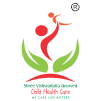Nadi Pariksha – Pulse Diagnosis
One of the important diagnostic techniques of the ancient science of Ayurved is nadi pariksha is also known as Ayurvedic traditional pulse Diagnosis.
Nadi pariksha or pulse diagnosis is a art of determining and understanding the disease process because of dosha imbalance before any overt signs of the disease have manifested. By detecting early symptoms of imbalance & disease reactions in the body one can determine the nature of Future bodily reaction. Arterial pulse, face, eyes, tongue, lips & nails provide subtle indication.
The first Ayurvedic Samhita to describe nadi pariksha or pulse examination is Sarangadhara Samhita. Later works such as Bhavaprakasa, Yogaratnakara, Basavarajeeyam etc. deal extensively with the subject.
Nadi pariksha or pulse diagnosis is the ancient art and science of detecting the existing status of a person’s body, mind, soul and spirit. Nadi pariksha or pulse is that vital flow of energy or life that courses through as a subtle channel all over the body and enables the Ayurvedic physician (vaidya) to feel the way blood parts from the heart. It is based on the principle of vibration theory elaborated in this century by Quantum physics that the physical universe is essentially vibrational in nature. Every organ and tissue in the body has its own unique vibrational signature which carries the information of its state of functioning.

To a skilled practitioners, taking your pulse is more than counting the beats. The functioning and health of the entire mind body constitution can be determined from the pulse including the balance of the doshas, the health of the various that may crop up later etc. By detecting early symptoms of imbalance and disease reaction in the body , one can take preventive steps to correct the problem before it manifests into a major one.
In the ayurveda, vata, pitta, and kapha are the main diagnostic variables. change in the main proportion of these bio-entities is used as sign of change within the patient. Ayurvedic pulse diagnostic is a the unique and non-invasive diagnosis method that determines state of these doshas. However this is only justifiable if pulse diagnosis yields a consistent result. The examiner observes the different pulse attributes to draw an appropriate picture of a patient’s health.
Health is defined differently in Ayurveda than it is in the biomedical models. According to Ayureda, health is defined as the state of equilibrium of bio entities (dosha,) digestive juices enzyms and hormones (Agni), body tissues (Dhatu) and the normal excretion of waste a materials (mala) along with a happy state of soul (atma). sensory a motor and mind. (Indriya), a mind (manas). This equilibrium tends to be influenced by some unhealthy condition such as irregular diet, stress, & weathers change. Thus the ayurvedic physician is able to diagnose subtle sub clinical changes in the dosha in relatively healthy subject
Ayureda is the practice based medicine. correct diagnosis can be done only after proper clinical examination. Ayurveda treats patients as a whole & not only the disease & hence proper clinical examination is most importance & for that Nadi pariksha pulse diagnosis is to much important role to gain true intimacy of Doshas.

